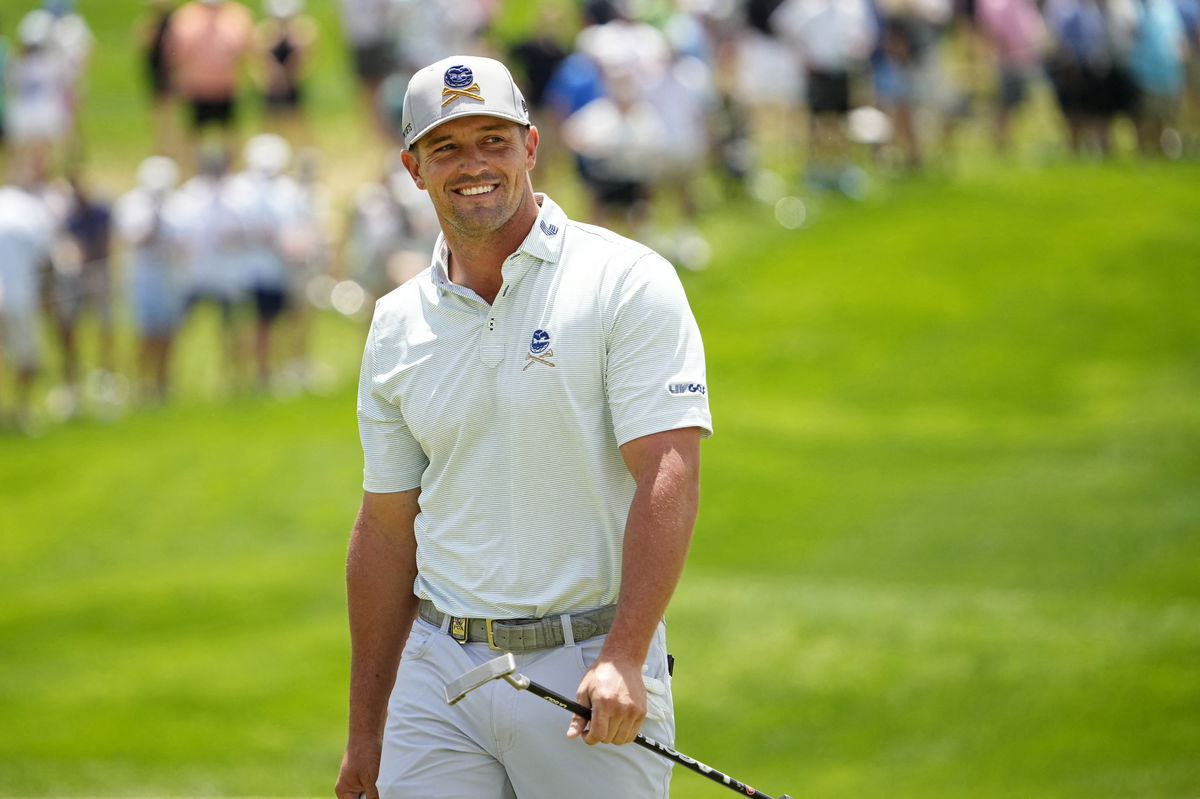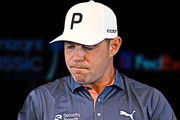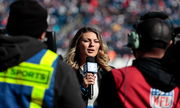
USA Today via Reuters
May 18, 2024; Louisville, Kentucky, USA; Bryson DeChambeau reacts after a putt on the first green during the third round of the PGA Championship golf tournament at Valhalla Golf Club. Mandatory Credit: Adam Cairns-USA TODAY Sports

USA Today via Reuters
May 18, 2024; Louisville, Kentucky, USA; Bryson DeChambeau reacts after a putt on the first green during the third round of the PGA Championship golf tournament at Valhalla Golf Club. Mandatory Credit: Adam Cairns-USA TODAY Sports
A graveyard is how you’d define the “Big Mouth” at Oakmont Country Club. Sure, every single bunker this year (168, in total) is going to define who wins and who loses the 125th U.S. Open, but this one will serve as one of the major headaches. And why not? It cost Jim Furyk his U.S. Open win. Jim Furyk was in contention at the 2007 U.S. Open when he bogeyed the hole and fell behind the lead after trying to drive the short par-4. He lost by one stroke! A nightmare is how you’d define it. But what exactly is this nightmarish “Big Mouth?”
Watch What’s Trending Now!
When it’s not scaring the golfers, “Big Mouth” is almost like a great theatre show on the 17th. The 17th is the shortest par 4 at this Pennsylvania course (312 yards), but also the most exciting when it comes to helping gain (or lose) a stroke. The “Big Mouth” bunker has a sharp dogleg left and a steep elevation change of 48 feet next to it. The 17th hole is undoubtedly easily drivable; however, the elite roster must clear an intermediate section of bunkers to reach a small, convex green perched on a ridge. And that’s the thing–you have to fight to remain on the green and avoid “Big Mouth.”
The hole’s putting surface is the smallest on the course at just 5,371 sq. ft. It has a convex shape, resembling an upside-down soup bowl, and is surrounded by five deep bunkers, with the most notable being the front right bunker called “Big Mouth.” It is located front right, which poses a significant challenge for those who miss the green. Then, golf course architect Gill Hanse added more difficulty to it after a course restoration. “We wanted to make sure the Pews were still in position to challenge the landing area of the longest players. The Pews were also rebuilt to be less consistent from pew to pew, much like the ones originally constructed by the Fowneses,” Hanse explained.
ADVERTISEMENT
Hanse’s restoration opened the front left approach, tempting players to use a driver off the tee. A safe layup with an iron to the right is also an option. The hole requires a delicate shot over “Big Mouth” to a green with little depth for wedge approaches. This modest-looking hole can yield scores ranging from 2s to 7s.
One more day of prep.
Rise and grind. pic.twitter.com/kKZlQzILyn
— U.S. Open (@usopengolf) June 11, 2025
So, if it poses so much of a threat, how can you score here at all? The strategic play on “Big Mouth” involves weighing the risks of an aggressive drive against the potential rewards. Players can opt to lay up with a mid-iron and approach with a wedge, but the small putting surface and surrounding hazards make it difficult to hold shots. With a stroke average of 3.887 in 2016 and a ranking of 18th in difficulty, “Big Mouth” exemplifies the fine line between scoring opportunities and potential pitfalls in golf. In fact, “Big Mouth” offered Phil Rodgers nothing but gloom when at the 1962 U.S. Open at Oakmont Country Club.
ADVERTISEMENT
Top Stories
Tiger Woods & Charlie Woods Paid Special Homage by Annika Sorenstam’s Son at PNC Championship

Gary Woodland’s Father Chokes Back Tears Over Moving Gesture at PNC Championship

Tiger Woods’ GF Receives Emotional Message from Daughter Kai Trump After Turning 48

Amanda Balionis Has Strong Reaction as Top PGA Tour Analyst Exits Golf Channel for Rival Network

Scottie Scheffler Delivers Bad News to Tiger Woods After Sparking TGL Rumors

“Big Mouth” and the horror of the 1962 U.S. Open
The 17th hole of the 1962 U.S. Open became infamous for Phil Rodgers’ misfortune, largely due to the notorious “Big Mouth” bunker. During the first round, he aimed for an eagle but hit his tee shot short, landing in newly planted trees designed to penalize aggressive players. His ball became wedged in the upper branches, leading to a comical struggle as he attempted to extricate it. After three attempts, he finally dislodged the ball but not before carding a quadruple-bogey eight. Reflecting on his experience, Rodgers quipped, “I’ve got a long way to go to get even with it.”
ADVERTISEMENT
This hole was also notable for Jack Nicklaus‘ stunning upset over Arnold Palmer, marking a significant moment in golf history. The 17th, described as a short but dangerous par 4, features the intimidating “Big Mouth” bunker directly between the tee box and the green, which is guarded by treacherous swales and additional bunkers. Marino Parascenzo, a celebrated sportswriter, called the bunker “the brat…simply outclassed by its siblings.” The bunker plays a critical role in the hole’s design, forcing players to choose between a risky drive and a safer layup. Rodgers’ struggles on this hole ultimately cost him a chance to compete in the playoffs, as he missed by two shots. He eventually finished T3–his best U.S. Open performance.
ADVERTISEMENT
ADVERTISEMENT
ADVERTISEMENT

